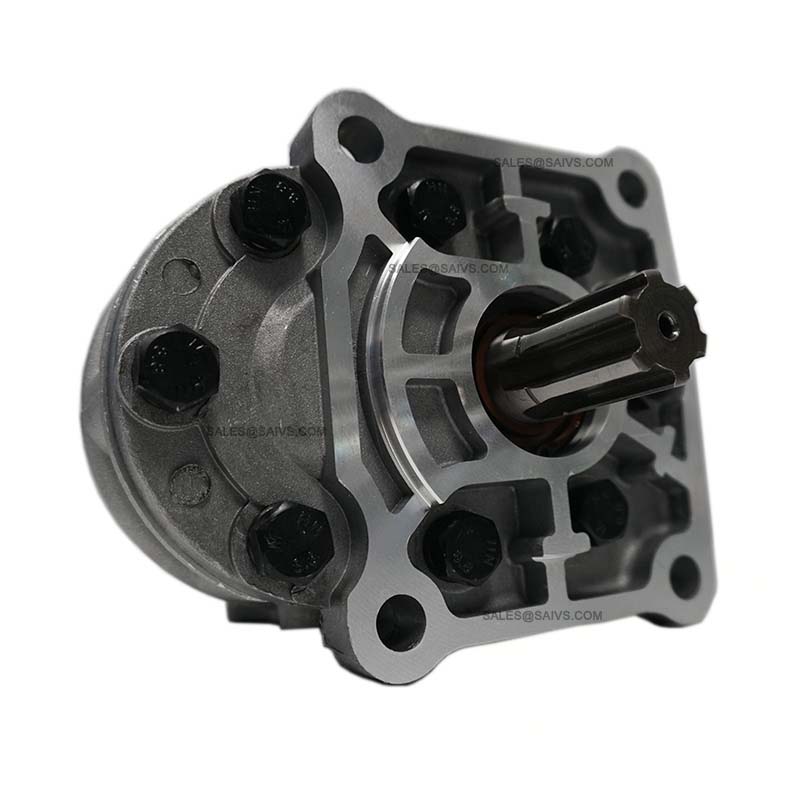How to adjust Hydraulic Pump Pressure
Understanding hydraulic pump Pressure
Hydraulic Pump Pressure is a critical parameter that determines the performance and efficiency of a hydraulic system. It represents the force exerted by the hydraulic fluid on a unit area. Operators can optimize system performance, prolong component life, and ensure safe operation by precisely adjusting this pressure.
Reasons for Adjusting Hydraulic Pump Pressure
Optimizing system performance: Matching the pump pressure to the load can enhance efficiency and reduce energy consumption.
Extending component life: Proper pressure settings can minimize wear and tear on components, prolonging the system's lifespan.
Adapting to different operating conditions: Hydraulic Systems must often operate under varying loads and speeds. Adjusting pressure allows the system to adapt to these changes.
Improving system stability: The right pressure setting can enhance system stability and reduce the risk of malfunctions.
Tools and Safety Equipment Required
Pressure gauge: To accurately measure the output pressure.
Adjustable wrench: To adjust the pressure relief valve.
Screwdriver: This is used to open the pump housing and fine-tune internal components.
Allen wrench: For adjusting pressure settings on some pumps.
Safety glasses: To protect your eyes from hydraulic fluid splashes.
Gloves: To protect your hands from hydraulic fluid and potential injuries.
Steel-toed boots: To protect your feet from falling objects.
Ear protection: To protect your hearing from loud noises generated by the system.
Step-by-Step Guide to Adjusting Hydraulic Pump Pressure
Shutdown and safety check: Ensure the hydraulic system is turned off and depressurized. Inspect the pump and its components for any damage.
Locate the pressure adjustment mechanism: This is typically a screw or bolt on the relief valve.
Loosen the locknut: Use an adjustable wrench to loosen the locknut.
Adjust the pressure: Carefully turn the adjustment screw using a screwdriver or Allen wrench. The clockwise rotation usually increases pressure, while counterclockwise rotation decreases it.
Monitor pressure: Use the pressure gauge to monitor the pressure.
Tighten the locknut: Once the desired pressure is reached, tighten the locknut.
Restart the system: Turn on the system and test it under load.
Fine-tune: Make minor adjustments as needed based on the test results.
Important Considerations
Gradual adjustments: Make slow, incremental adjustments to avoid sudden pressure changes that could damage the system.
Pressure limits: Ensure that the adjusted pressure is within the pump's rated capacity.
Regular maintenance: Perform regular maintenance on the hydraulic system to ensure optimal performance and longevity.
Record keeping: Keep a record of the adjusted pressure for future reference.
Additional Tips
Consult the manual: Always refer to the hydraulic pump's manual for specific instructions.
Seek professional help: If you are unsure about any aspect of the adjustment process, consult a qualified technician.
Safety first: Prioritize safety at all times. Wear the appropriate protective equipment and follow all safety guidelines.
By following these guidelines, you can safely and effectively adjust the hydraulic pump pressure to optimize the performance of your system.
Saivs brand
- VQ Series vane pumps with high performance
- Smaller Pressure Fluctuation Denison Vane Parker Pump T6C For Sale
- Parker T7B T7D T7E high pressure hydraulic vane pumps
- rexroth solenoid valve DBW10A DBW10B
- double drum marine positioning hydraulic towing winch
- PVV-1X series Rexroth Vane Pump
- Counterbalance Valves CBEA
- Counterbalance Valves CBGG
- AZPB series Rexroth Gear Pumps
- Gear pumps series NSH10M
